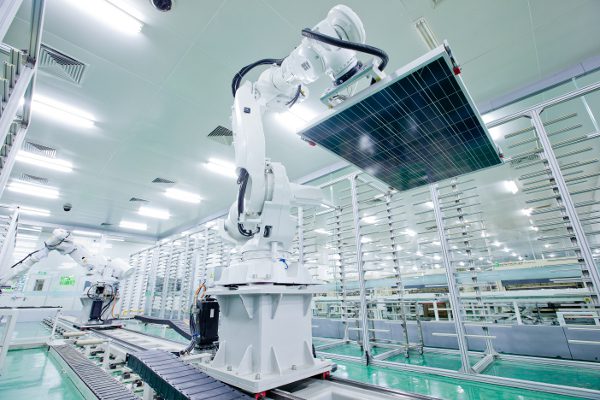Since mid-January, there’s been a steady rise in polysilicon costs, especially for n-type materials, leading to talks of an imminent increase in module prices. Post China’s New Year Holiday, solar cell and module companies are feeling the strain from these rising costs. In response, recent bids are revealing a clear price increase trend in the module sector.

Taking the example of the Shandong Zhongya Supply Chain’s 2024-2025 (first batch) PV module procurement, which opened bids on February 26, this tender was divided into three sections, procuring 250 MW PERC modules in section one, 350 MW TOPCon modules in section two, and 700 MW heterojunction (HJT) modules in section three.
HJT is in the spotlight, a rare occurrence. Additionally, both Section One and Section Three demand large-format silicon wafers and cells for production, posing requirements for the capacity iteration of relevant companies.
In terms of prices, Section One had participation from nine companies, quoting between 0.82-0.88 CNY/W, averaging 0.8514 CNY/W. Compared to previous tenders, this time the quotes are slightly higher, concentrated around 0.84-0.86 CNY/W.
Furthermore, Solarbe learned that some first-tier and new first-tier brands are no longer participating in the p-type section, focusing solely on the n-type section.
Section Two involved 11 companies, quoting between 0.861-0.92 CNY/W, averaging 0.8846 CNY/W. Compared to previous tenders, prices have slightly risen. The n-p price difference of around 0.04 CNY/W is expected to persist throughout the first half of the year.
Section Three witnessed the participation of five companies, quoting between 1.03-1.3 CNY/W, averaging 1.116 CNY/W. HJT module prices remain relatively high. This could potentially affect customer choices.
The tender by Yunnan Energy Investment and Development, which opened bids on February 27, sent an even clearer price increase signal.
Bidding prices ranged from 0.9-1.0856 CNY/W, all exceeding 0.9 CNY/W, with an average of 0.952 CNY/W. Even without considering the notably high maximum bid price, the average bid price of other companies, at 0.9409 CNY/W, is significantly higher than other state-owned enterprises’ module tenders before the Chinese New Year. Clearly, module price increases are now inevitable, and the industry chain is poised for a rebound.
In Solarbe’s market forecast for the year, it was mentioned that solar product production is currently in a surplus state, with capacity enough to meet the global market demand in 2024. So, why are module prices still rising?
Firstly, with the end of the Spring Festival and the warming weather, more projects are starting in China, leading to a short-term increase in demand for modules, providing support to prices.
Secondly, starting from mid to late January, polysilicon prices increased, with n-type materials witnessing a 6% increase. In this process, prices in the wafer and cell stages either decreased or remained stable, with only a slight recent uptick.
According to the information Solarbe has obtained, the silicon wafer and cell stages have begun to recover profitability, and integrated manufacturers’ capacity utilization has increased, returning to reasonable prices.
Lastly, some companies that previously won large bids hope to drive up industry chain prices, alleviate price adjustment pressure, and avoid subsequent performance risks.
Solarbe believes that in the first half of 2024, before technology and capacity iterations are completed, industry chain prices will be in a relatively chaotic state.
Overall, the recent price increase in the industry chain is a rational phenomenon. Ensuring reasonable profits at each stage also helps promote the healthy and sustainable development of the PV industry chain, strengthening technological innovation. In the future, as outdated capacity gradually phases out, the industry chain is expected to move towards a new balance.


